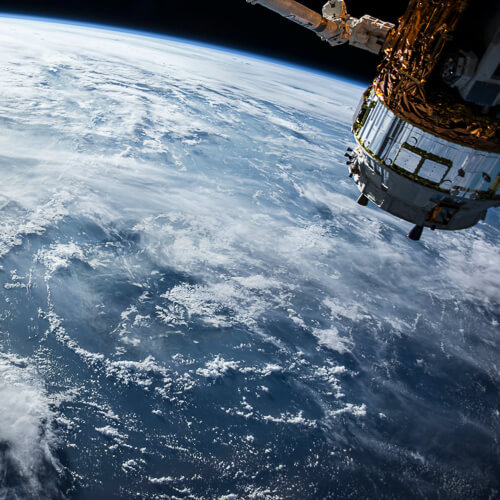
VSAT (Very Small Aperture Terminals) operators will now be able to provide satellite-based cellular backhaul connectivity to telcos in India, thanks to approval by the Digital Communications Commission (DCC), part of the Department of Telecommunications.
This allows Indian communications service providers, like Bharti Airtel, Reliance Jio and Vodafone Idea, to use satellite capacity from VSAT license holders, like Hughes, Nelco and BSNL, to connect sites.
Figure 1:  Message from the stars: Satellite-based backhaul is usually used to connect rural areas, or as a short-term fix during disasters.
Message from the stars: Satellite-based backhaul is usually used to connect rural areas, or as a short-term fix during disasters.
(Source: NASA)
Before this change, only firms with a National Long Distance (NLD) license were allowed to offer backhaul connectivity to telcos. However, most of the satellite players had a VSAT license.
It can also help telcos cost-effectively extend coverage in rural and remote areas that are yet to be connected with fiber. Around 50% of India's population is not yet connected.
Satellite is also likely to play a role in 5G coverage and in providing Internet of Things (IoT) connectivity.
Country roads
Typically, satellite-based backhaul is used by telcos to connect sites in remote or rural areas, or sometimes for temporary use cases, such as during a disaster.
However, a key challenge is high latency. This is the main reason there is limited use of traditional geostationary orbit (GEO) satellites for backhauling. In addition, the cost of satellite capacity is also on the higher side. As a result, they comprised just 1.9% of the backhaul links in 2017, according to the GSMA.
However, this is set to change with the emergence of low-Earth orbit (LEO) satellite constellations.
Since LEOs are placed closer to the earth, it addresses the latency issue. And the cost of satellite capacity is also likely to come down with growing competition. Even so, satellite-based backhauling is still not a mature concept.
Want to know more about satellite? Check out our dedicated satellite content channel here on Light Reading.
This development assumes significance because several global LEO satellite players, including Elon Musk's Starlink, Bharti's OneWeb and Amazon's Project Kuiper, have recently started exploring the Indian market.
Bharti's OneWeb specifically will offer satellite capacity for cellular backhaul.
Meanwhile, Starlink and Project Kuiper have different business models, focusing on providing satellite-based broadband to end users. Regulations mean OneWeb will need a VSAT permit to provide satellite-based backhaul services to the telcos.
Related posts:
— Gagandeep Kaur, contributing editor, special to Light Reading
Read more about:
AsiaAbout the Author(s)
You May Also Like











